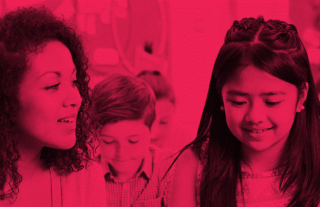What is Collective Teacher Efficacy (CTE)?


No matter how much the world changes, one thing in education remains mostly the same: Students learn in classrooms, led by one teacher at a time. If the teacher is effective, then the students thrive. If the teacher is less effective, the students may flounder. Even though teachers may talk with their colleagues about their shared students, the vast majority of a teacher’s day is spent separated from other teachers. This isolation prevents teachers from the professional learning required to improve their practice. Even more important, if they’re struggling to be effective in the classroom, teachers may become frustrated and their morale may plummet. Teaching can be a lonely endeavor.

All teachers want to feel a sense of efficacy — in other words, the confidence that they being effective. Developing this confidence occurs more often and more quickly when teachers are part of a team, working together collaboratively and collectively. That is why one powerful key structure in education is the concept of collective teacher efficacy.
What does Collective Teacher Efficacy mean?
Simply put, collective teacher efficacy is the belief that teachers can more positively impact the learning of their students if they work as a team. Each word of the term is important. “Collective” refers to the power of groups of teachers over individual teachers. “Teacher” centers the expertise of classroom practitioners, rather than school leaders or outside educators. “Efficacy” highlights the importance of teacher beliefs to improve student outcomes.
This concept builds on the scholarship of psychologist Albert Bandura in the 1970s, which demonstrated that teams believing in their potential led to better results.
Bandura defined the concept of collective efficacy as “a group’s shared belief in the conjoint capabilities to organize and execute the courses of action required to produce given levels of attainment.”
In 2011, researcher Rachel Eells introduced the term collective teacher efficacy. Professor John Hattie continued this work in the field of education, most notably in his book Visible Learning.
What does Hattie mean by collective teacher efficacy?
In his work on collective teacher efficacy, Hattie emphasizes the importance of teachers working together in professional learning communities. By doing so, teachers have a shared goal: the learning of their students. In cycles of inquiry, teachers look at student work, analyze strengths and areas of growth in the data, and plan next steps to improve their instruction so that their students can learn more.
In order to build collective efficacy, according to Hattie, teachers must tightly align their actions to student outcomes. This way, teachers can see clearly the connection between what they do and the results that follow. Teams with detailed “theories of action” — when we do this, then our students will do this — develop their collective teacher efficacy more quickly than teams that have loose cause-and-effect links. This is why selecting the right data point is crucial when teachers set up their action plans.
Ultimately what’s most important is that teams of teachers experience success, especially at the beginning of their work together. Having a “quick win” motivates teachers to do more and to believe more in themselves and each other. Drawn-out and multi-step approaches, on the other hand, lead teachers to get bogged down and feel “in the weeds.” In order for teachers to practice a growth mindset, and to build trust and momentum with their colleagues, they must feel that their efforts will lead to success.
What does that all mean for students?
In schools with strong collective teacher efficacy, students learn more and their academic achievement increases. More than any other factor influencing student outcomes — for example, socioeconomic status, parent involvement, motivation, home environment, and concentration — collective teacher efficacy impacts student achievement the most.
In other words, when teams of teachers truly and fully believe in their collective ability to improve the learning of their students, their students do better and learn more.
In addition, school culture improves as teachers believe more strongly in themselves. Academic expectations rise. Classroom environments improve because teachers focus their attention on learning, rather than compliance. Teachers are more likely to engage in support of students outside of class because they believe their efforts will lead to results. As a result, there is a positive culture of “what’s possible” instead of “what’s lacking,” which promotes persistence and joy in teaching and learning.
Summary
We have long known of the magic of highly skilled teachers in the learning of their students. But when individual teachers are isolated in their own classrooms with their students, that magic can go only so far. With collective teacher efficacy, teachers build off the strengths of their colleagues, believing together in their shared ability to influence their students’ learning. When teams of teachers are confident that their collaboration will yield better student outcomes, there is no limit to the success that students can achieve.




